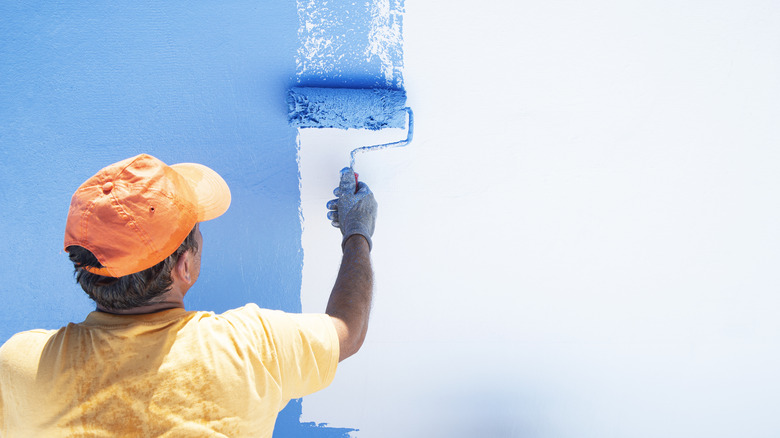What Are 'Lap Marks' And How To Avoid Them When Painting Your Walls
As you paint your home's walls, you may notice some areas look like they're a different color or have a bit of a different shine to them. Those could be lap marks. Lap marks are not uncommon when painting, but they're also not a good thing. They often occur when wet paint overlaps dry paint, sometimes creating more of a shine in some areas or a darker color in some areas. As you roll your brush over the previously painted area, you're creating a second layer of paint on top of it if the previous paint dried even slightly.
Lap marks can remain long after the paint dries, so you'll want to do what you can to avoid them. One way to do that is to create a wet edge while painting, and you'll need to make sure when you're painting that you're moving quickly through the process to avoid sections drying. Having a wet edge allows the previously applied paint to blend well with the newly applied paint, creating a seamless addition of color. With a few simple house painting rules, you'll be able to create a professional-looking finish for any room of the home.
How to avoid lap marks when painting
You can do a couple of simple things to help avoid lap marks from occurring. The first is to roll your paint from the top to the bottom of the wall in long lines instead of moving in various directions. It's also a good idea to use a primer before you begin.
Your goal should be to paint the whole wall at one time, which minimizes the amount of time the paint has to drive. As you work through the wall, brush the paint onto the wall about six inches or so away from where you just painted. Then, paint backward, covering the unpainted section as well as moving into the edge that's already been painted. This movement allows you to continuously blend the paint so that it doesn't dry out as you move across the room.
You can also reduce the risk of lap marks by avoiding breaks while painting the wall. If you need to do it in sections, stop at areas like walls or windows or even the corner of the wall. This way, it's harder to notice the overlap of dry and wet paint.
Fixing lap marks in paint
It's not easy to see the lap marks until the paint begins to dry, and at that point, it seems too late to do anything about it. The best route to take is to use fine-grit sandpaper applied to the surface of the wall to bring down any of the paint layers to the drywall. The goal is to create a smooth surface again, and that means removing any build-up or shine that's present and starting over. If you sand, be sure to wait until the paint is fully dry to get started, which often means waiting several hours or longer. Then, after sanding, wipe down the surface to remove any dust and grit, which can ultimately lead to further damage to the painting project.
However, it's not always necessary to go to these lengths if the lap marks are not as prominent (and you don't want the work of sanding). Paint roller marks like these can be annoying, especially those that seem to stand out as the light catches them. If you have roller marks of any type, and you know you've used inferior or cheap paint, purchase a higher quality paint and add a second coat. Most of the time, the second coat will hide any lap marks well if you're using quality paint.


